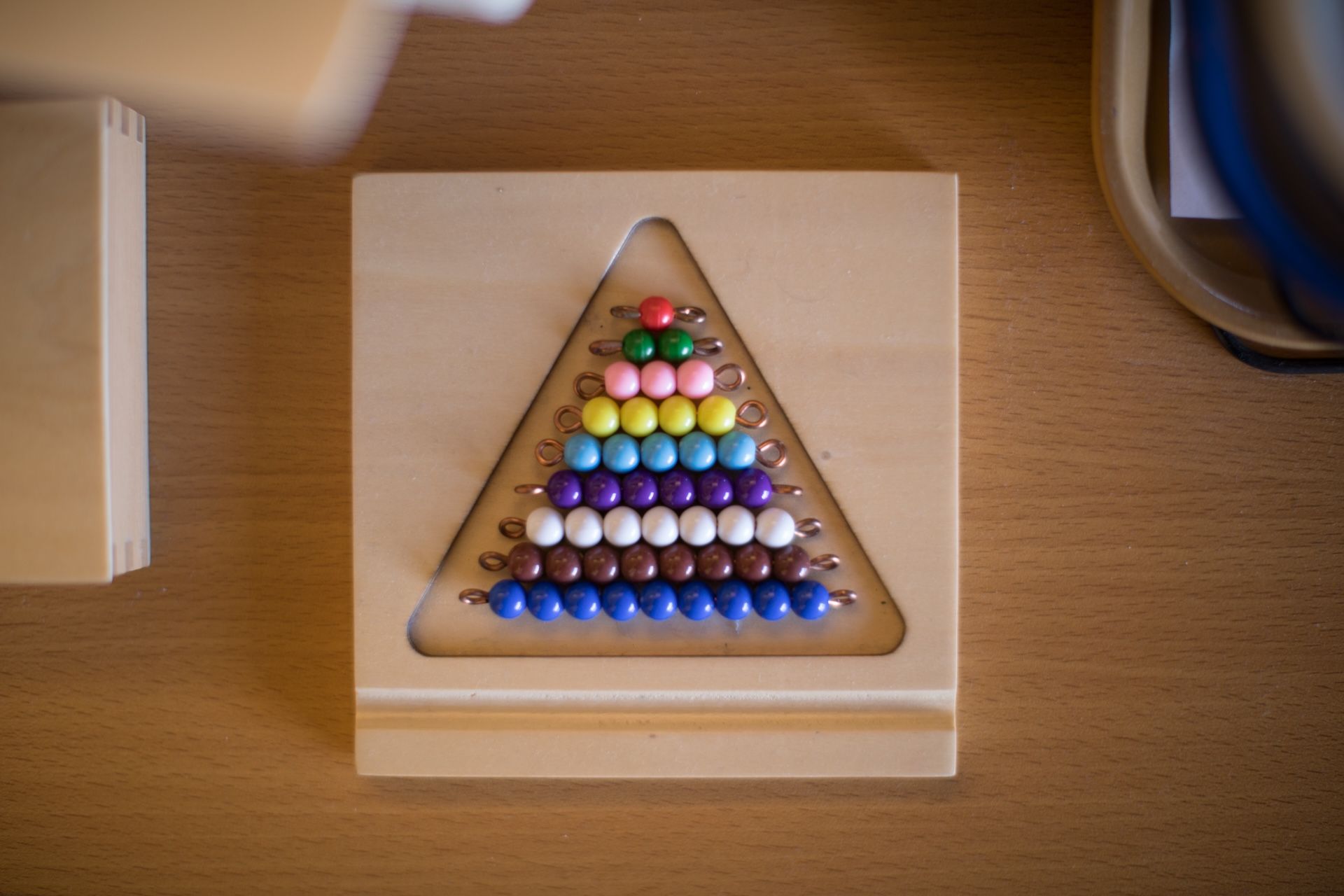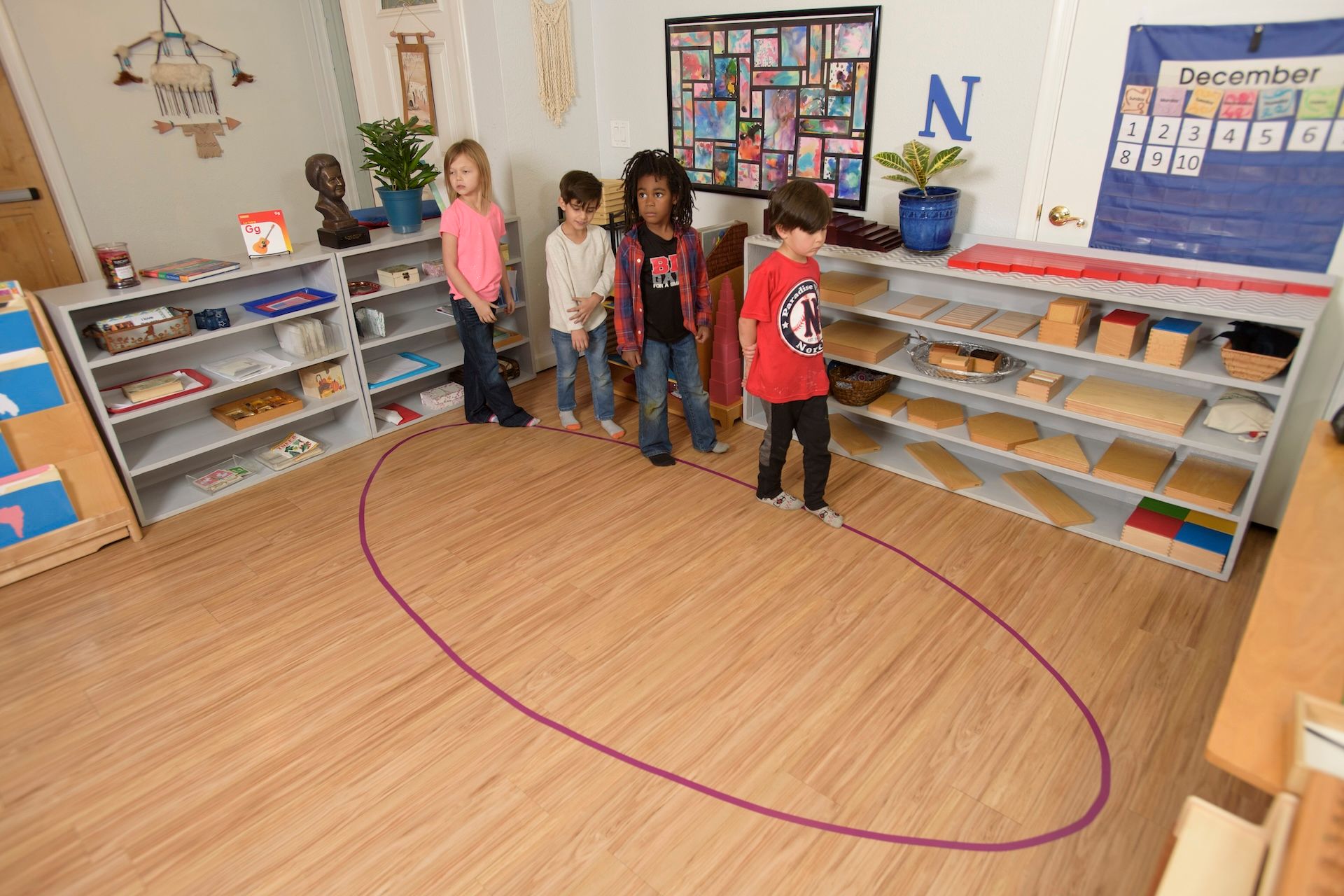
Mealtimes with a young child in a Montessori household or classroom look a little different than most people might expect. Parents, caretakers, and teachers commonly give children unbreakable plastic ware to eat with in a high chair that puts them at a distance from the table. But the Montessori method doesn’t separate children from the grownup way of eating. We want to give children a sense of independence by providing them with child-size versions of real tableware and letting them sit at the table.
Sitting At The Table
One a child starts sitting up on their own and showing an interest in solid foods, you can start letting them sit at a table to eat. Often, children will initiate this transition themselves by showing an interest in sitting at the table for meals.
For meals your child eats by themselves, a Montessori weaning table gives them an opportunity to climb into and out of the chair themselves. It offers the child independence and encourages their participation in the process of eating. When the child is eating with family, using a high chair that pulls right up to the table helps them feel included.
Training Placemat
When teaching a child to eat, you want to give them a sense of order. Let them know what’s expected of them and then help them feed themselves. One of the ways you can make things easier for your child is by providing them with a placemat that outlines where everything goes.
A “ first placemat ” is simply a cloth placemat with outlines for the location of spoon, fork, plate, and glass. These placemats can be purchased or hand-made. They provide a road map for a child navigating their early eating experiences.
Real Tableware
Montessori educators encourage the use of real china , glass, and metal tableware. Also, provide child-sized tableware so kids don’t have any trouble handling it.
Yes, there’s a good chance the child will break some glasses and plates (in fact, you should expect it). But having breakable tableware lets children know they are trusted and gives them a chance to experience natural consequences. Children who know the plate will break if they throw it on the floor, and that they’ll have to help clean up the mess, often learn more quickly not to misbehave at the table.
Let Them Help
Once the child can walk and carry things safely, they can help you with setting the table and cleaning up afterward. Montessori parents often set aside a low cupboard where they can store the child-size dishes along with clothes for clean-up. Being able to access their own tableware encourages the child’s sense of independence as well as responsibility.
Teaching your child to eat at the table in a responsible, adult way will take time and patience. But the rewards of including your child at the table and trusting them to use tableware just like the grownups are many. You’ll encourage a sense of responsibility and belonging, and they’re very likely to learn proper table manners more quickly than a child not following the Montessori method.
The post Montessori Mealtimes With Infants and Toddlers appeared first on Pebblecreek Montessori.
Hours
MONDAY - FRIDAY
HALF DAY: 8:30a – 12 noon
ACADEMIC DAY: 8:30a – 3:30p
EARLY CARE: 7:00a – 8:30a
AFTER CARE: 3:30p – 6:00p
OFFICE: 8:00a - 4:00p
Programs
Connect
Pebblecreek Montessori




